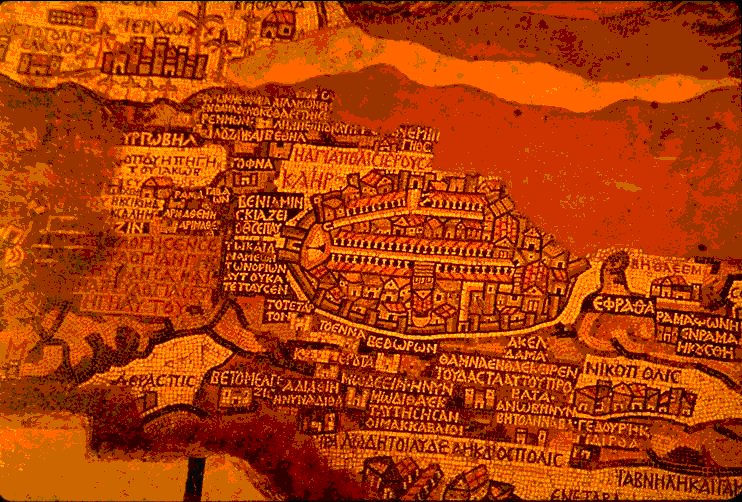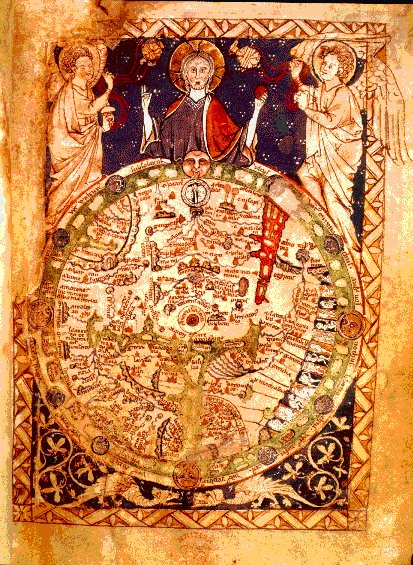If I forget thee O Jerusalem, let my
right hand lose her cunning. If I do not remember thee, let my tongue
cleave to the roof of my mouth; if I set not Jerusalem above my chiefest
joy.
[Psalms 137:5-6]
Introduction
The
whereabouts of site of the Temple of Jerusalem is a subject of great
controversy that has over the centuries attracted the attention of
religious leaders and more recently serious archaeologists, scientists
and historians, not forgetting every kind of amateur archaeologist and
religious freak imaginable, many of the former have written scholarly
works, whilst the later have drawn attention by their often strange
theories.

This site
does not pretend to present a scholarly work neither does it seek
sensation, it tries to examine objectively the story of the Temple both
from a Bible perspective and in relation to archaeological evidence
uncovered to this date together with the different theories relating to
the supposed site of the Temple.
Temple of
the Jews is generally believed to have stood in the proximity of the
Esplanade of the Mosques or as it is called by the Muslims the Haram
esh-Saharif. This belief is at the heart of the three great monotheist
religions founded in the Levant, religions that sprung from the beliefs
of the early Hebrew peoples and their ancestors.
The first
Temple of Jerusalem was according to the Bible built by King Solomon in
the tenth century BC, to be destroyed by the armies of Nebuchadnezzar in
587 BC, its treasures carted away as tribute and the people of Jerusalem
deported to Babylon. After their return from captivity the second Temple
was then built by Zerubbabel and the returning exiles in 516 BC.
King Herod
replaced the old Temple with a new and magnificent Temple a few years
before the birth of Christ. This Temple was built with the aid of the
Romans under the Emperor Augustus and the great administrator and
builder Agrippa the son-in-law of the Emperor and friend of Herod.
After the
Great Revolt of the Jews the resplendent Temple was razed to the ground
by Titus and the Jews were banished from Jerusalem under pain of instant
death if they dared enter the the city rebuilt by the Romans. The Jewish
Citadel that had protected the Temple was transformed into the Citadel
of Antonia, a garrison of the Roman army, and in the centuries that
followed the site of the Temple was forgotten slowly slipping out living
memory as the Jews commenced their long Diaspora.
 Over a
period of almost two thousand years
Jerusalem was then occupied by the Byzantines, the Mongols, the Arabs,
the Ottoman Empire and finally the British before the returning of the
Jews and the creation of the modern state of Israel.
Over a
period of almost two thousand years
Jerusalem was then occupied by the Byzantines, the Mongols, the Arabs,
the Ottoman Empire and finally the British before the returning of the
Jews and the creation of the modern state of Israel.
This book
traces the story of the Temple from its beginning and how certain
vestiges surveyed as possible proof of the Temple’s existence, its site
and its functioning when on the Day of Atonement, the greatest religious
feast in Jewish calendar, tens of thousands of animals were said to have
been sacrificed
By the
middle of the 19th century the supposed site of the Temple was firmly
fixed in the minds of men as that of the Muslim Haram, acknowledged by
the three great monotheist religions, Judaism, Christianity and Islam.
Over the second part of that century European archaeologists, during a
unique period in the history of the Haram, discovered and explored a
vast network of water cisterns in the heart of bedrock beneath the Haram
that had survived the centuries.
The story
of the Wailing Wall of the Kotel as it is known to the Jews, began with
the Arab conquest of Jerusalem by the Muslims in 638 AD, then the
Crusaders in 1099 AD until it fell to Salah-al-Din ibn Ayyub in 1187 AD.
From then until the middle of the twentieth it was under Muslim
domination, first by the Ayyubid Dynasty from 1193 to 1250 AD, followed
by the Mamelukes from 1260 to 1517 AD when it was taken by the Ottoman
Turks who reigned over the city until the arrival of the British during
World War I.
The eight
crusades lasted from 1096 to 1273 AD and the Latin Kingdoms established
in the Orient by the Crusaders lasted from 1099 to 1291 AD, the date of
the fall of Acre, the last important strong hold of the Crusaders,
captured by the Muslims under Saladin in 1187 AD. When Saladin died in
1193 Jerusalem remained under the tutelage of the Ayyubid Dynasty (the
family of Saladin) until 1250 AD. In 1219, the defensive walls of
Jerusalem were demolished on the order of the Sultan of Damascus, then
in 1244 Jerusalem was sacked by the Muslim Kharizmians, who massacred
the Christians and the Jews. Again in 1260 AD Jerusalem was sacked, this
time by the Mongols who had ravaged all of the Middle East and
especially Baghdad that was sacked.
In between
in 1250 AD the Mamelukes, mercenary slaves, converted to Islam and in
the service of the Ayyubids, seized power in Cairo for themselves.
Finally, in 1291 the Mamelukes expulsed the last of the Christian
Crusaders from the remaining territories they still held in the Orient
once and for all. The Mamelukes then governed Jerusalem for three
centuries with their ups and downs until the arrival of the Ottoman
Turks in 1517.
CONTINUE
READING



 Over a
period of almost two thousand y
Over a
period of almost two thousand y